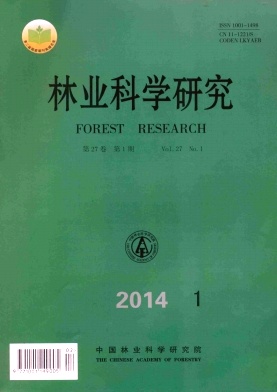Pollination Biology and Breeding System of Melastoma dendrisetosum
-
1.
College of Landscape Architecture, Fujian Agriculture and Forestry University, Fuzhou 350002, Fujian, China
-
Received Date:
2013-04-28
-
Abstract
To investigate the pollination characteristics of Melastoma dendrisetosum C. Chen, the flowering phenology, the pollinators, their behavior, the frequency of pollinator' visiting and climate condition were observed. Besides, the pollen viability, the stigma acceptability, P/O (pollen/ovule rate) and the breeding system of M. dendrisetosum were examined, which was studied in Diaoluo National Nature Reserve, Hainan Province, China. The results showed that M. dendrisetosum is typically heteranthery. The flowers of M. dendrisetosum come into blossom at 5:30-8:30 a.m., into ful1-blown at 8:30-9:00 a.m. and into petal-shut at 7:00 p.m. The florescence of individual flower and population flowers were 12-14 hours and 36±2 days respectively. There was no nectar in the flowers. The species of pollinator were Xylocopidae, Anthophoridae, Formicidae, Syrphidae and etc. The most effective pollinator was carpenter bee. The field experiments indicated that the fruit sets were significantly high in both artificially out-crossed and self-pollinated flowers, while no fruit set was observed in bagged emasculated flowers and the unpollinated bagged flowers. These indicated that there were no self-compatible, no self-pollination and agamospermy in this species. Pollinators were necessary for it. The breeding system of M. dendrisetosum was a typical facultative inbred type. The relative reproductive success (RRS) was 0.035, pollen and pollinator limitation were the most important limiting factors to M. dendrisetosum.
-

-
References
|
[1]
|
陈 介. 野牡丹科中国植物志(第53卷第1分册)[M].北京: 科学出版社, 1984: 152-159
|
|
[2]
|
陈 介. 中国野牡丹科野牡丹属植物的研究[J].华南农学院学报, l983, 4(1): 31-36
|
|
[3]
|
彭东辉, 张启翔, 黄俊婷. 中国野牡丹科观赏植物种质资源及其在福建省的分布初步调查[J].中国园林, 2007, 23(11): 83-88
|
|
[4]
|
彭东辉. 福建、海南野牡丹科植物资源评价与利用研究.北京: 北京林业大学, 2009
|
|
[5]
|
刘林德, 祝 宁, 申家恒, 等. 刺五加、短梗五加的开花动态及繁育系统的比较研究[J].生态学报, 2002, 22(4): 1041-1048
|
|
[6]
|
郭素枝. 扫描电镜技术及其应用[M].厦门: 厦门大学出版社, 2006, 74-96
|
|
[7]
|
Cruden R W. Pollen-ovule ratios: A conservative indicator of breeding systems in flowering plants[J]. Evolution, 1977, 31(3): 32-36 |
|
[8]
|
Dafni A. Pollination Ecology[M]. New York: Oxford Univ Press, 1992 |
|
[9]
|
路国辉, 武文华, 王瑞珍, 等. 野牡丹异型雄蕊的功能分化[J].生物多样性, 2009, 17(2): 174-181
|
|
[10]
|
杨利平, 屈 平, 李 燕, 等. 多花野牡丹传粉生物学特性研究[J]. 河北农业大学学报, 2007, 30(6): 42-45
|
|
[11]
|
Gross C L. The breeding system and pollinators of Melastoma affine (Melastomataceae): a pioneer shrub in tropical Australia[J]. Biotropica, 1993, 25(4): 468-474 |
|
[12]
|
Gross C L, Kukuk P F. Foraging strategies of Amegilla anomola at the flowers of Melastoma affine-no evidence for separate feeding and pollinating anthers[J]. Acta Hort, 2001, 561: 171-178 |
|
[13]
|
罗中莱, 张奠湘. 异型雄蕊的研究进展[J].热带亚热带植物学报, 2005, 13(6): 536-542
|
|
[14]
|
彭东辉, 兰思仁, 吴沙沙. 毛菍传粉生物学研究[J].热带亚热带植物学报, 2012, 20(6): 618-625
|
-
-
Proportional views

-





 DownLoad:
DownLoad: